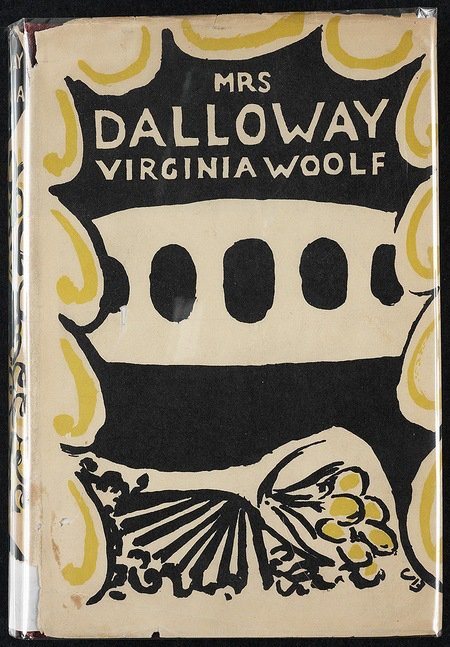 Image 1 of
Image 1 of


Rooms in Mrs Dalloway
Rooms in Mrs Dalloway (1925) with Angela Harris
Woolf is very interested in the tension between social connection (which she loved) and savouring one’s private space (which she also loved). Mrs Dalloway explores that tension through the use of different rooms.
As a young woman, Clarissa Dalloway is frustrated by the difficulty of really knowing people. But, in her fifties, Clarissa appreciates her separateness in herself, and in the world. ‘Here was one room; there another’. She watches her elderly neighbour move in solitude around the rooms of her house, and thinks: 'that’s the miracle, that's the mystery'. What is the mystery and miracle? What is the meaning of Clarissa's change of attitude?
This lecture will explore the ways in which Mrs Dalloway understands the balance between our obligations to others and our obligations to ourselves. Woolf explores this question through the various rooms in the novel: Lady Bruton’s dining room, Clarissa’s attic bedroom, her drawing-room for parties, her bedroom at Bourton where she gossips with Sally and Peter, Septimus and Rezia’s room in a boarding-house. What do these rooms mean; how do they shape the novel?
Live online lecture and seminar with Angela Harris, Independent Scholar, London, and Lecturer for Literature Cambridge.
Saturday 12 April 2026
18.00-20.00 British Summer Time
19.00-21.00 Central European Summer Time
Morning or lunchtime in the Americas
Fees
£33.00 Full price
£28.00 VWSGB Members
£28.00 CAMcard Holders
£28.00 Students on a low income
Rooms in Mrs Dalloway (1925) with Angela Harris
Woolf is very interested in the tension between social connection (which she loved) and savouring one’s private space (which she also loved). Mrs Dalloway explores that tension through the use of different rooms.
As a young woman, Clarissa Dalloway is frustrated by the difficulty of really knowing people. But, in her fifties, Clarissa appreciates her separateness in herself, and in the world. ‘Here was one room; there another’. She watches her elderly neighbour move in solitude around the rooms of her house, and thinks: 'that’s the miracle, that's the mystery'. What is the mystery and miracle? What is the meaning of Clarissa's change of attitude?
This lecture will explore the ways in which Mrs Dalloway understands the balance between our obligations to others and our obligations to ourselves. Woolf explores this question through the various rooms in the novel: Lady Bruton’s dining room, Clarissa’s attic bedroom, her drawing-room for parties, her bedroom at Bourton where she gossips with Sally and Peter, Septimus and Rezia’s room in a boarding-house. What do these rooms mean; how do they shape the novel?
Live online lecture and seminar with Angela Harris, Independent Scholar, London, and Lecturer for Literature Cambridge.
Saturday 12 April 2026
18.00-20.00 British Summer Time
19.00-21.00 Central European Summer Time
Morning or lunchtime in the Americas
Fees
£33.00 Full price
£28.00 VWSGB Members
£28.00 CAMcard Holders
£28.00 Students on a low income
Rooms in Mrs Dalloway (1925) with Angela Harris
Woolf is very interested in the tension between social connection (which she loved) and savouring one’s private space (which she also loved). Mrs Dalloway explores that tension through the use of different rooms.
As a young woman, Clarissa Dalloway is frustrated by the difficulty of really knowing people. But, in her fifties, Clarissa appreciates her separateness in herself, and in the world. ‘Here was one room; there another’. She watches her elderly neighbour move in solitude around the rooms of her house, and thinks: 'that’s the miracle, that's the mystery'. What is the mystery and miracle? What is the meaning of Clarissa's change of attitude?
This lecture will explore the ways in which Mrs Dalloway understands the balance between our obligations to others and our obligations to ourselves. Woolf explores this question through the various rooms in the novel: Lady Bruton’s dining room, Clarissa’s attic bedroom, her drawing-room for parties, her bedroom at Bourton where she gossips with Sally and Peter, Septimus and Rezia’s room in a boarding-house. What do these rooms mean; how do they shape the novel?
Live online lecture and seminar with Angela Harris, Independent Scholar, London, and Lecturer for Literature Cambridge.
Saturday 12 April 2026
18.00-20.00 British Summer Time
19.00-21.00 Central European Summer Time
Morning or lunchtime in the Americas
Fees
£33.00 Full price
£28.00 VWSGB Members
£28.00 CAMcard Holders
£28.00 Students on a low income
